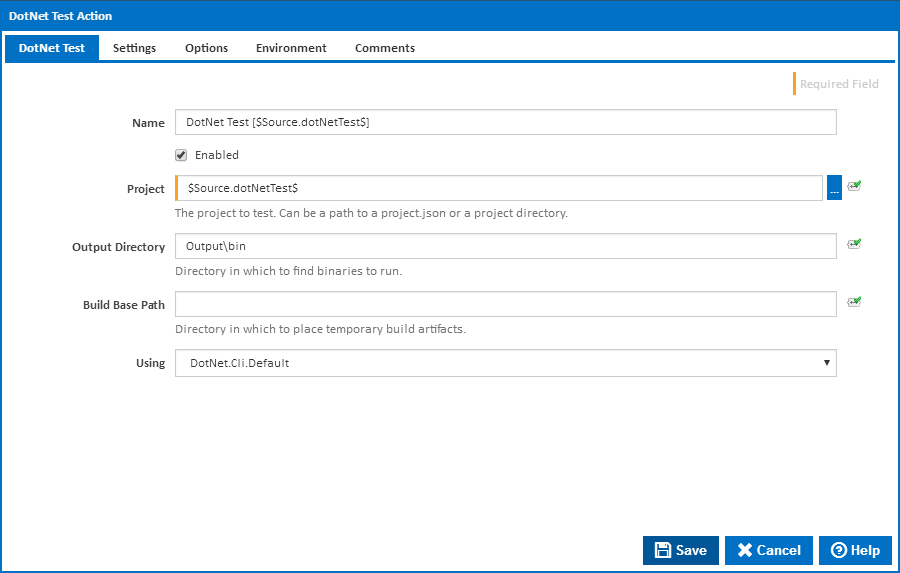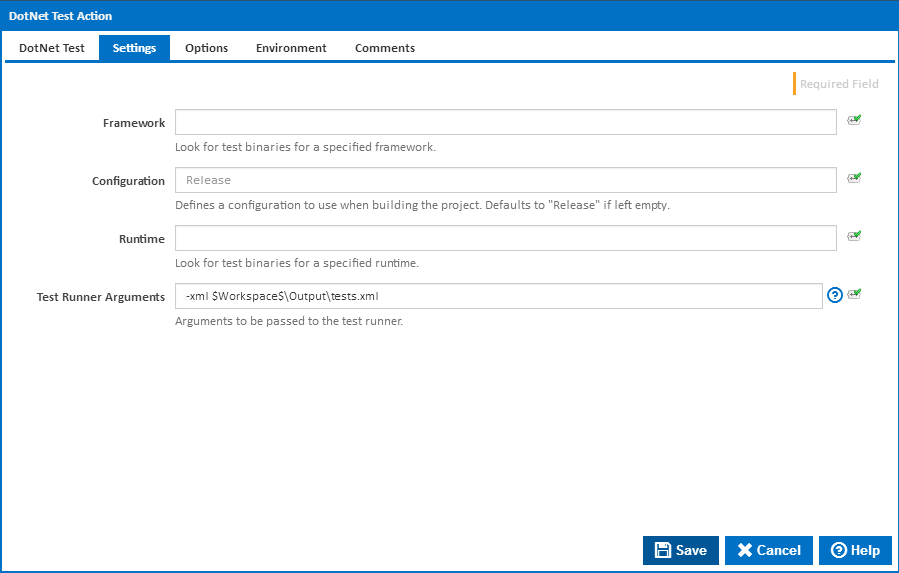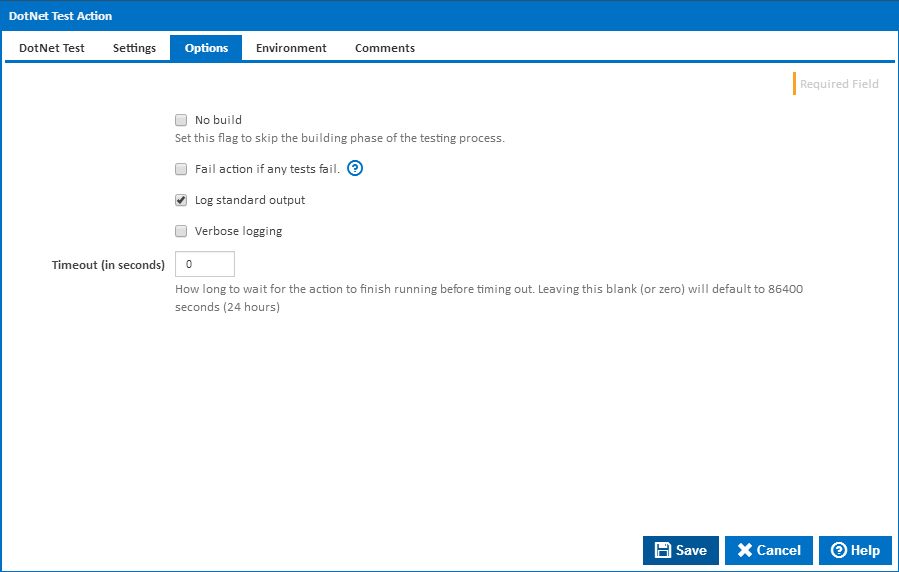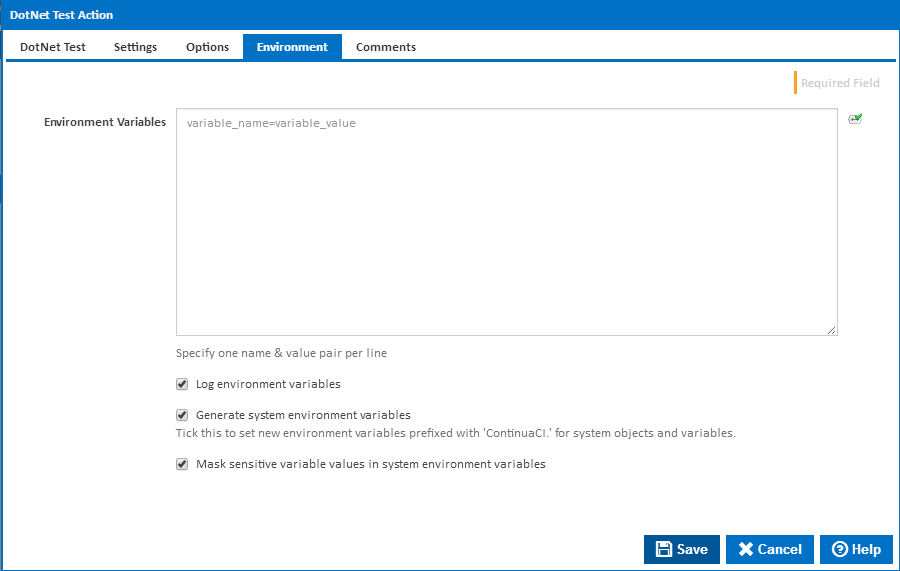The DotNet Test action is used to run unit tests on a .Net project using the configured test runner.
Name
A friendly name for this action (will be displayed in the actions workflow area).
Enabled
Determines if this action will be run within the relevant stage.
Project
The project to test. This can be either a path to a project.json file or to a directory. If omitted, it will default to the workspace folder. Note that relative paths are rooted in the workspace folder
Output Directory
The path to the folder in which to find the binaries to run the tests. Relative paths will be anchored to the workspace folder. If left empty, it will default to "/bin/[configuration]/[framework]/" for portable applications or "/bin/[configuration]/[framework]/[runtime]" for self-contained applications.
Build Base Path
The path to the folder in which to place temporary outputs. Relative paths will be anchored to the workspace folder.
Using
The Using drop down is populated with any property collector whose namespace matches the pattern defined by the DotNet CLI Actions. The pattern for this action is ^DotNet.Cli.*
If you create a property collector for this action, make sure you select the Path Finder PlugIn type and give it a name that will match the pattern above in blue.
For more in-depth explanations on property collectors see Property Collectors.
Alternatively, you can select the Custom option from the Using drop down list and specify a path in the resulting input field that will be displayed. Please read Why it's a good idea to use a property collector before using this option.
Settings
Framework
Look for test binaries for a specified framework.
Configuration
The configuration to use when building the project. This defaults to "Debug" if left empty.
Runtime
Look for test binaries for a specified runtime.
Test Runner Arguments
Arguments to be passed to the test runner. The relevant arguments depend on the test runner specified in the project.json file.
To display the test results in Continua CI, you need to export the test results as a file an use one of the Import Tests actions to read the results from the file. Use this field to specify the path to the results file using the relevant argument for the test runner you are using e.g. -xml for XUnit and --resultxml for NUnit.
Options
No build
Tick this checkbox to skip the building the project before running the tests.
Log standard output
If this is ticked, the command line output is written to the build log.
Verbose logging
Tick this checkbox to request verbose command line output.
Timeout (in seconds)
How long to wait for the action to finish running before timing out. Leaving this blank (or zero) will default to 86400 seconds (24 hours).
Environment Variables
Multiple environment variables can be defined - one per line. These are set before the DotNet Test command line is run.
Log environment variables
If this is ticked, environment variable values are written to the build log.
Generate system environment variables
Tick this checkbox to set up a list of new environment variables prefixed with 'ContinuaCI.' for all current system expression objects and variables.
Mask sensitive variable values in system environment variables
If this is ticked, the values of any variables marked as senstive will be masked with **** when setting system environment variables. Clear this to expose the values.



